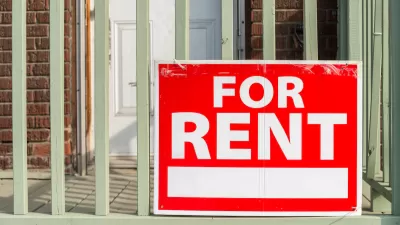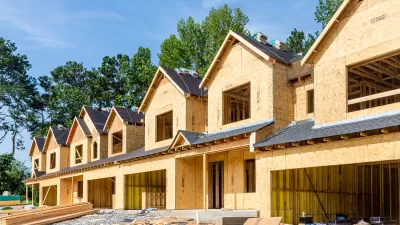The overheated housing market of the last two years is showing signs of slowing down as home sales fall to the lowest levels since the pandemic began.

After years of climbing prices and falling supplies, the housing market is finally showing some signs that it is stabilizing. As reported by Alana Semuels in Time, “Existing home sales were down for the third straight month in April, falling 2.4%, according to the [National Association of Realtors (NAR)].” Semuels also writes that “A survey from the National Association of Homebuilders showed constructors’ confidence in the market for newly-built single-family homes fell to the lowest reading since June 2020.”
“Higher interest rates aren’t the only reason demand is tapering. [Bill] McBride predicted in 2015 that the 2020s would see a big boost in demand as a large cohort of Americans moved into the 30 to 39 age group, a prime home-buying age. But Census data is indicating that there are fewer people in that age group than previously estimated, possibly because of excess deaths attributable to both the opioid epidemic and the COVID-19 pandemic.” Other pandemic-era changes may also continue to affect housing: “If companies start reversing policies allowing workers to work remotely, demand could slow in many housing markets.”
The source article analyzes other factors affecting the housing market, such as slowing birth rates and immigration.
FULL STORY: Signs Are Pointing to a Slowdown in the Housing Market—At Last

Planetizen Federal Action Tracker
A weekly monitor of how Trump’s orders and actions are impacting planners and planning in America.

Chicago’s Ghost Rails
Just beneath the surface of the modern city lie the remnants of its expansive early 20th-century streetcar system.

San Antonio and Austin are Fusing Into one Massive Megaregion
The region spanning the two central Texas cities is growing fast, posing challenges for local infrastructure and water supplies.

Since Zion's Shuttles Went Electric “The Smog is Gone”
Visitors to Zion National Park can enjoy the canyon via the nation’s first fully electric park shuttle system.

Trump Distributing DOT Safety Funds at 1/10 Rate of Biden
Funds for Safe Streets and other transportation safety and equity programs are being held up by administrative reviews and conflicts with the Trump administration’s priorities.

German Cities Subsidize Taxis for Women Amid Wave of Violence
Free or low-cost taxi rides can help women navigate cities more safely, but critics say the programs don't address the root causes of violence against women.
Urban Design for Planners 1: Software Tools
This six-course series explores essential urban design concepts using open source software and equips planners with the tools they need to participate fully in the urban design process.
Planning for Universal Design
Learn the tools for implementing Universal Design in planning regulations.
planning NEXT
Appalachian Highlands Housing Partners
Mpact (founded as Rail~Volution)
City of Camden Redevelopment Agency
City of Astoria
City of Portland
City of Laramie





























